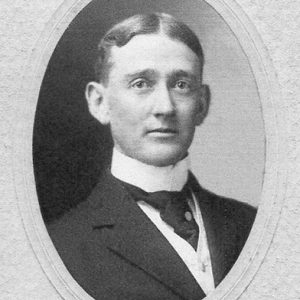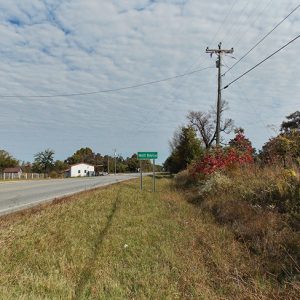calsfoundation@cals.org
Wolf Bayou (Cleburne County)
Wolf Bayou is located on the Wolf Bayou Cutoff Road (Highway 90) near Concord (Cleburne County) and Drasco (Cleburne County).
According to local historian Louie Clark, French explorers called the local runoff-fed creek a “bayou,” and when the post office was established in 1851 the word “wolf” was added because the timberland along the creek was the home of many wolves. The area was sparsely populated by a few hunters and trappers by 1818. Even with the coming of the post office, not many lived in the area, and only gradually did the region increase in population. The creek later became popular with kayakers. The Old Cherokee Boundary Line goes through the northwestern part of Wolf Bayou and runs diagonally across Greers Ferry Lake.
The still-active post office is one of the oldest in the county. John William Reves was appointed the first postmaster of Wolf Bayou on February 19, 1851. John and his wife, Elizabeth Terrell Reves, moved their family west from Grayson County, Virginia, in a wagon pulled by oxen. After a sojourn in Missouri, they settled in Wolf Bayou not long after Arkansas statehood in 1836. They became hillside farmers and opened a trading post that later also served as the post office.
The Reverend James Barlow Ward migrated to Wolf Bayou in the fall of 1859 with his wife, Nancy Newton Carter Ward, and their children. Rev. Ward was a minister at the Hopewell Presbyterian Church in Carroll County, Tennessee, and came to preach at the Cumberland Presbyterian Church in Searcy (White County). Their oldest son, Howell Lafayette Ward, and his brothers turned to mercantile pursuits in the Wolf Bayou area and became successful businessmen.
Along with the Ward family, John W. Ross helped make Wolf Bayou successful. He and his wife, Hannah Caroline Lane Ross, set out in an oxen-drawn wagon for the hills of Arkansas in April 1859, settling in Wolf Bayou. He purchased wooded land and cleared it for farming, but his efforts to improve his land were interrupted by the Civil War. He served in the Confederate army, leaving his young sons to till the soil.
Since most of the early settlers of Wolf Bayou were born in the South, most in the community favored the Confederacy when war came in 1861. Several young men traveled to Batesville (Independence County) or to Jacksonport (Jackson County) to enlist. Enoch Newton Floyd, a recruiter from Floral (Independence County), about eleven miles distant, formed a company with himself as captain and took the young men to Jacksonport to enlist. This unit joined the Eighth Arkansas Infantry and formed Company H at Camp Price on July 17, 1861.
Wolf Bayou was on the main route from Batesville to Clinton (Van Buren County) and thus bore the brunt of the foraging parties of both the Union and Confederate armies. Guerrilla bands, jayhawkers, and bushwhackers pillaged and looted, hiding out in the isolated hills around Wolf Bayou. In March 1864, there was a skirmish near Crossroads (now Drasco) and another near Devil’s Fork on the Little Red River; these entailed conflicts between Union soldiers and bushwhackers led by an irregular named Smith.
Following the war, John Ross built a grist mill along the McIntosh Branch of Big Creek using machinery he built by hand, operating it by horse power. He and his sons continued to farm and to raise livestock. John Ross and his family moved to White County in 1878.
By 1914, Wolf Bayou had cotton gins, a general store, a blacksmith shop, a grist mill, and a sawmill, many of which were owned and operated by the Ward family. Otto Thomas Ward, grandson of Rev. James Barlow Ward, became Wolf Bayou’s first resident physician, practicing medicine there his entire career. His brother, Rubin Earl Ward, was appointed postmaster of Wolf Bayou in 1914, followed by Otto Ward and his wife, Rosa Ward, in 1926.
Many used the corn they grew to make moonshine, which was especially profitable during the days of Prohibition. In 1926, a Sunday school class at a Wolf Bayou church was disturbed by men making liquor at nearby stills. A group of church leaders began a search, which led to the discovery of two stills. The people running the stills ran away, and a couple of the church leaders went to summon the sheriff. The men who ran away returned with guns and made threats against the remaining people who were waiting for the sheriff. The owners of the stills and their helpers were ultimately indicted and each found guilty on one count of possessing a still and one count of making mash.
A noted pioneer of country music was harmonica virtuoso Wayne Raney of Wolf Bayou. Best known for his hit song “Why Don’t You Haul Off and Love Me” (1949), Raney, along with fellow Arkansan Lonnie Glosson of Judsonia (White County), played a major role in making the harmonica a popular instrument through musical performances as well as through a mail-order harmonica business. Raney was born in a log cabin in Wolf Bayou. The cabin was later moved to Heber Springs (Cleburne County), where it is exhibited as the first log cabin with windows to be built in Cleburne County.
Noted Wolf Bayou historian, songwriter, and musician Louie Roland Clark co-wrote “Let Old Mother Nature Have Her Way,” which was recorded in 1951 by Carl Smith. The song hit number one on the country-and-western charts and stayed there for eight weeks. It remained on the charts for thirty-three weeks. The song was co-written by Loy Samuel Sutherland of Grassey (Cleburne County), a first cousin to Wayne Raney’s wife.
The Wolf Bayou Cutoff connects to the busy Highway 25, one of the main roads to Greers Ferry Lake. The old Hill Top Café near the Wolf Bayou Cutoff going toward Drasco, now called DJ’s Diner, is a popular stopping place for travelers along the highway.
Education was provided for grades 1–8 by the Comfort and Longview schools, which were established in the late 1800s. By 1900, fifty-six students were enrolled in the Comfort School. The schools became part of the Concord School District in about 1936.
Louie Clark wrote that Wolf Bayou never developed into a full-fledged municipality with a town government because of its isolated location. The neighboring towns of Concord and Drasco were on the main road to Heber Springs and Greers Ferry Lake, whereas Wolf Bayou was between two hills off the beaten path.
For additional information:
Berry, Evalena. Time and the River: A Centennial History of Cleburne County. Little Rock: Rose Publishing Co., 1982.
Clark, Louie. Picture History of Healing Springs Township, Cleburne County, Arkansas. Drasco, AR: Louie Clark, 1988.
Clark, Louie, and Jeannie Clark McGary. Wolf Bayou and Healing Springs Township. Rev. ed. Drasco, AR: Louie Clark, 1996.
Kenneth Rorie
Van Buren, Arkansas
 Cleburne County Map
Cleburne County Map  Oak Grove Church
Oak Grove Church  Wayne Raney
Wayne Raney  Otto Ward
Otto Ward  Wolf Bayou
Wolf Bayou 




Comments
No comments on this entry yet.